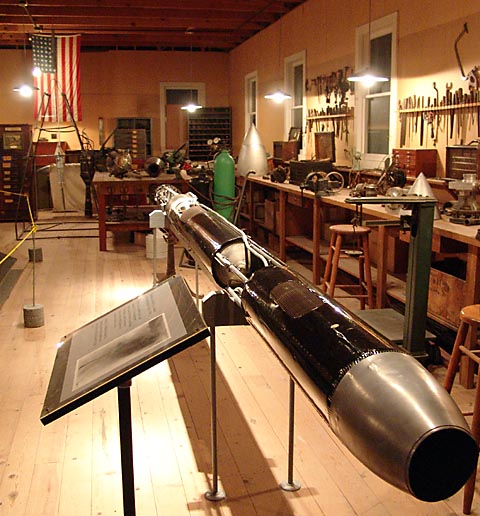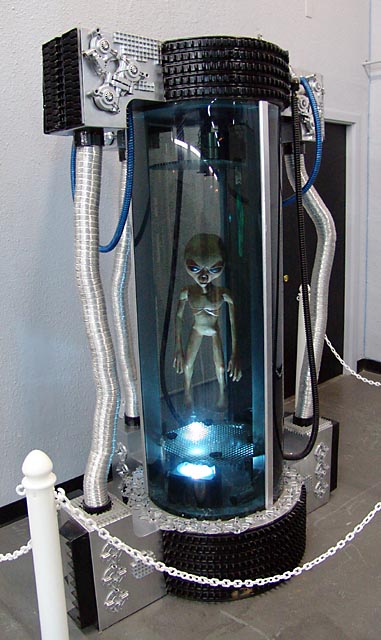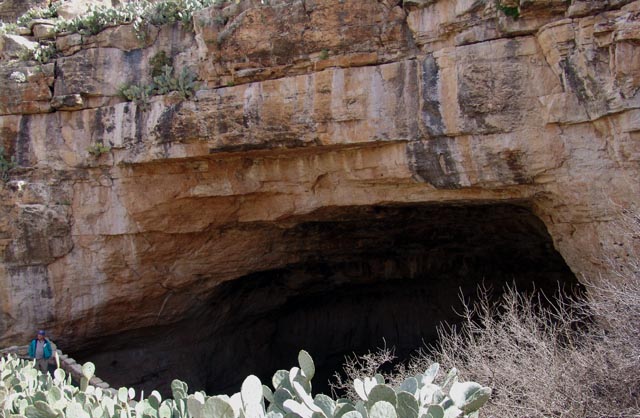
Rockets, Aliens, and Caves
March 19-20, 2005
We stopped for the night in Roswell, NM and then visited a couple of museums.

The first stop was the Roswell Museum, where they have a reconstruction of
Goddard's lab. Goddard was an early pioneer in rocketry. He started his
experiments in Massachusetts, but when his experiments got bigger and more
dangerous; he moved to Roswell where he could conduct his experiments in a more
sparsely populated area. Goddard developed many of the ideas used in rocketry
and spacecraft today. One of Goddard's more advanced rockets is in the
foreground, an earlier rocket is shown under the flag in the background.

The next stop in Roswell was the International UFO Museum and Research
Center. Roswell is, of course, well-known for the "sightings of UFOs" and the
supposed crash in 1947 of a flying saucer with an alien aboard. This
museum contains news clippings and displays about the UFO sightings and other
such nonsense. It seems to me to be more of marketing gimmick now.

Carlsbad Caverns National Park contains some enormous and very beautiful
caves. We elected to enter the main cave through the "Natural Entrance" and walk
down 750 (vertical) feet to the Big Room. The cave was known to people in the
late 1800s as the "bat cave" since thousands of bats come flying out the
entrance at dusk in the summer time; they feed on insects and return to the cave
at dawn. We didn't get to see the bats since they have migrated south for the
winter, and have not yet returned.

The Big Room is enormous; the floor area is about that of 14 football fields,
and the height ranges up to about 250 feet. This picture shows stalactites,
stalagmites, and columns. I have always had trouble remembering which were
stalactites and which we stalagmites. Today I learned that stalactites hang
"tight to the ceiling" and stalagmites grow up "tall and mighty" from the floor.
Columns form when they grow together.
Next we head into Texas.